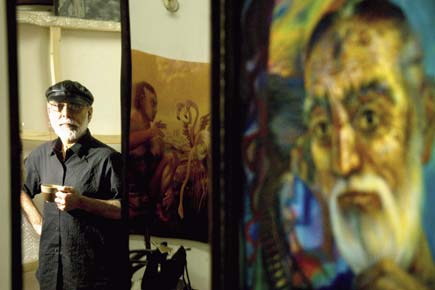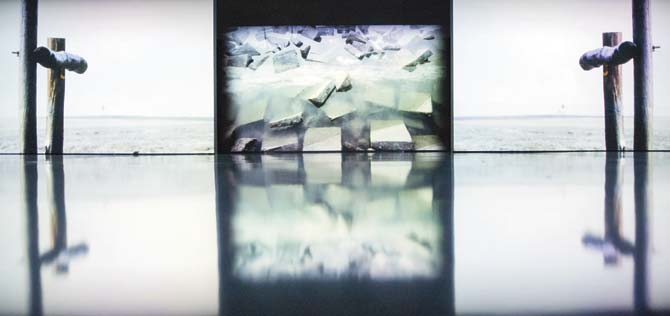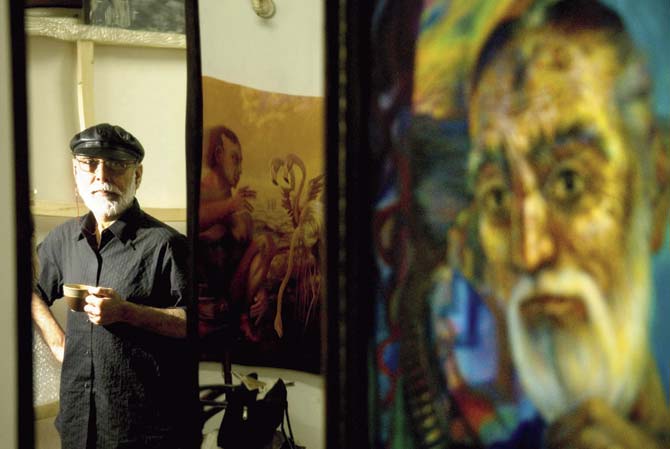Artist Ranbir Kaleka’s installation, House of Opaque, which reflects the loss caused by the recurring Sundarbans flood, is one of the top 15 works selected for the Asia Pacific Brewery Foundation’s Signature Art Prize

The art installation titled House of Opaque by New Delhi-based artist Ranbir Kaleka is one of the top 15 works selected out of 105 entries from 24 countries for the Asia Pacific Brewery Foundation’s Signature Art Prize to be announced this week. The award recognises outstanding contemporary visual artwork produced in the region. The 61-year-old artist created the 12-metre-wide installation for the Kochi Biennale 2012. It uses a narrative structure to present the idea of displacement and society’s response to it. A quick chat with Kaleka:

A still from the installation, House of Opaque, (below) multimedia artist Ranbir Kaleka. Pic courtesy: Adam Huggins
Q. Can you tell us a bit about House of Opaque?
A. House of Opaque is inspired by a documentary titled Mean Sea Level (2009) shot by a friend and filmmaker, Pradip Saha. The story is set in the Sundarbans in West Bengal, in which a villager is shown pointing to his house, houses of his friends and a tree he played under, in his childhood. But when the camera zooms out, you find him standing in a boat and all around him is marshland. The floods and massive erosion due to climate change have destroyed his village. The video installation first plays factual shots, and slowly turns it into an artwork. The idea was to map the villager’s internal turmoil. His house, which is now underwater is half eroded, on the bed of the sea. He makes a sand sculpture of his house on the sea shore, but the rising tide swallows it. As an artist, my idea was to delve into his mind.
ADVERTISEMENT

Q. What techniques have you used to create this work of art?
A. Art works best in great spaces. I have used three synchronised projection screens in a row across a length of 12 metres. The first and the last one are placed on the floor and the centre screen is mounted a metre away from the wall, just behind these two screens. For the immersive experience, I have incorporated instrumental sounds of the boat and the sea.
Q. What does the audience take back from the artwork?
A. The visitors will be engulfed by the visual display. The floor is polished so that it reflects the images. Similar to a great painting that lives outside the frame, any artwork has to be imagined. It is not about what you are looking at but what you create in your head.
 Subscribe today by clicking the link and stay updated with the latest news!" Click here!
Subscribe today by clicking the link and stay updated with the latest news!" Click here!







